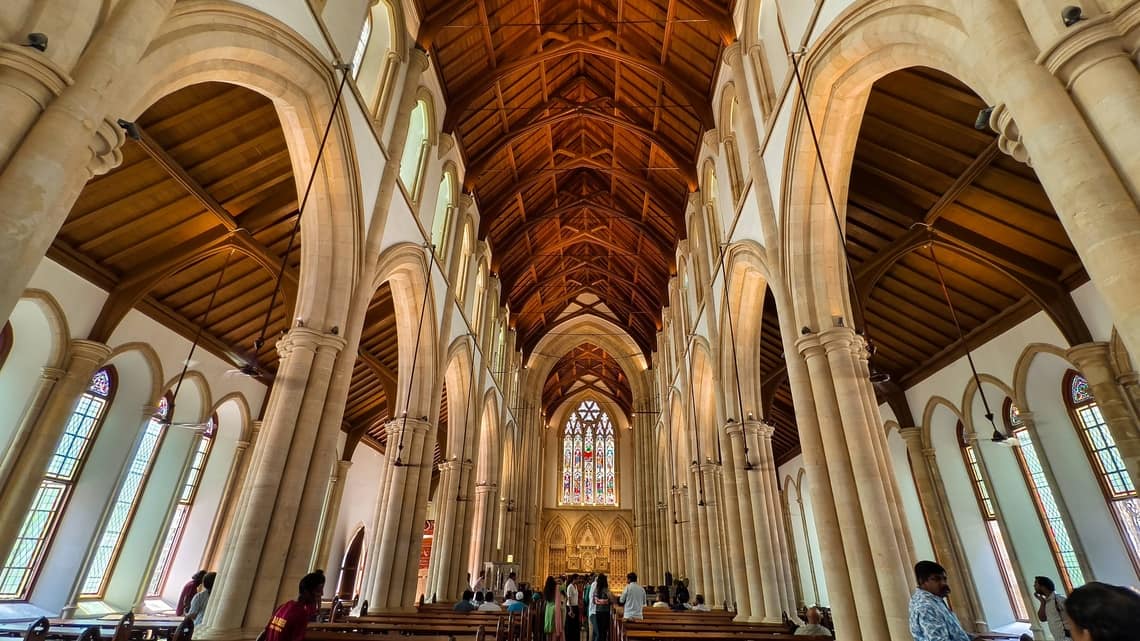Rescuing a 165-year-old church in Mumbai
[ad_1]
Afghan church stands tall with sparkling stained glass, polished wood and clean walls after a mammoth renovation project that spanned more than two decades
“Have you seen the fossils?” asked conservation specialist Anupam Sah. It was a surprising question; we were inside a church where one wouldn’t expect to discover prehistoric remains. He pointed to a stone slab below a large altar. About 160 years ago, it was shipped to India from Derbyshire in England. It has thousands of sea creatures fossilised for eternity.
The Derbyshire fossil is one of the several magnificent details in Mumbai’s newly renovated church of St John the Evangelist. Popularly known as Afghan church, the 165-year-old structure was constructed as a war memorial by the British government to the soldiers who died in the Afghan War between 1847-58.
The building with Gothic architecture, marked by sparkling renovated stained glass, is a Grade 1-heritage structure, and an important landmark in the history of the city. The renovation began in 1996, with lead architect Kirtida Unwalla preparing a report. She says “friends of the church” approached her for advice and help. “Before that Amita Baig of World Monuments Fund India had set up a small corpus of funding.”
Unwalla teamed up with Swati Chandgadkar, a specialist in stained glass conservation, and the work started. There were several halts due to funding issues. About two years ago, World Monuments Fund India in collaboration with the Afghan Church’s Pastorate Committee & Custodian with funding support from Citibank collected ₹14 crore to complete the renovation.
There is a reredos or ornamental screen behind the altar complete with intricate mosaic work in memory of 13 soldiers who were friends. There are thousands of war martyrs whose names are inscribed in marble slabs laid in the walls. The lettering had faded over time, and now wears a fresh look.
Sah invited architecture students from the city’s JJ School of Arts to work on the lettering. The cathedral’s association with the art college goes back to its inception. In the mid-19th century, a metal screen with floral motifs was designed by the Victorian architect William Butterfield and made by students of the college under the supervision of British artist M. J. Higgins. Today it stands near the main entrance of the building.
There is another contribution by the art students. In the 1930s, a stained glass window was was renovated by them. Chandgadkar, who replaced about 700 glass pieces, points to a pictorial depiction of the Magi: “If you notice carefully, there are references to India. The turbans of Magi indicate they are Parsi, Hindu and Sikh.”
The church was built and has been restored by many hands, representing the syncretic nature of historic architecture of the city.
[ad_2]
Source link
